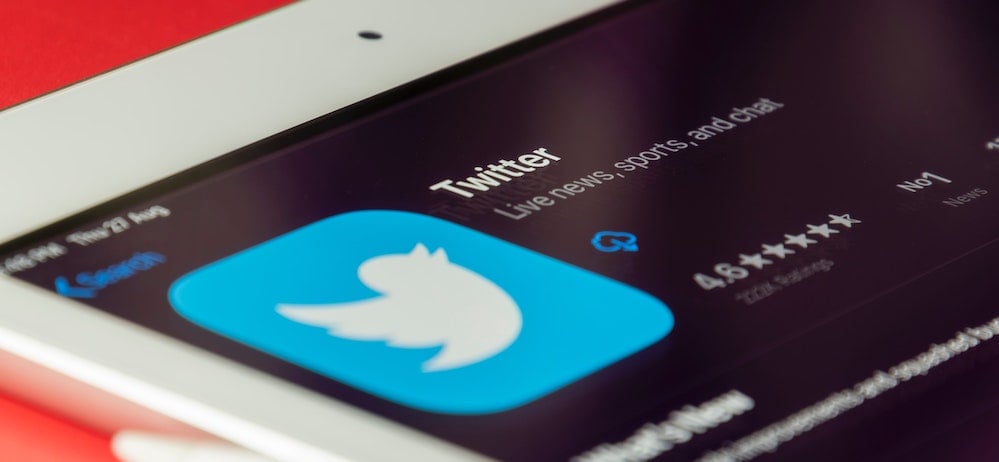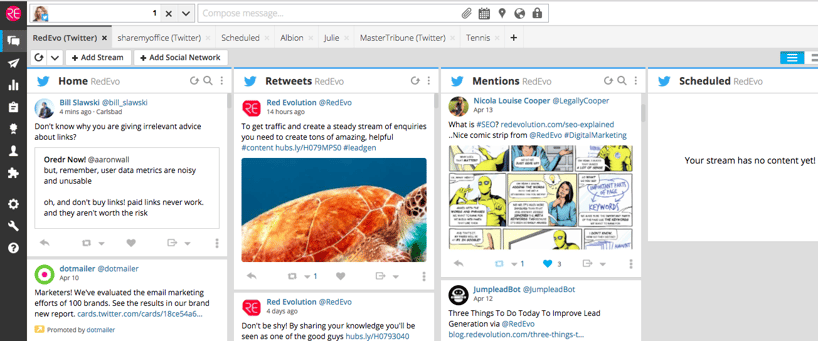Twitter has been around since 2006, and so you would be forgiven for thinking that most businesses and marketing people have got the hang of it by now. However, when we talk to clients we discover that many of them are still confused about why they should use Twitter for business, how to make the most of it in a B2B industry, and, in particular, how to get started.
Is Twitter Right For Your Business?
Twitter has certainly been in the news recently, but not for the right reasons. Elon Musk's shenanigans and users leaping off the platform like lemmings are not particularly inspiring if you're considering it as a business tool but let's try to look deeper. First things first, with over 300 million monthly active users, around 20 million of those in the UK, and more than 500 million tweets per day - that's about 6,000 tweets per second - Twitter is still a valuable business platform.
It's almost certainly worth investigating for your business, but before you decide to go for it, you need to check your buyer personas. If they use Twitter then you need to be there. If they don't then you need to think again... perhaps you are also targeting influencers or referrers who use it. If none of your audiences use Twitter then it's only going to be of benefit when you want to check the local traffic or find out what Taylor Swift is up to.
Who Uses Twitter?
You might be surprised by just how many of your potential customers are Twitter users. About a quarter of US adults use Twitter and about 70% of them are men. They tend to be well educated with an above average income. It's therefore highly likely that your target audiences are lurking there. Do your research, look carefully at your buyer personas and work out if there are any opportunities for you.

Why Use Twitter for business?
That's not to say you have to use Twitter. It helps if you know what your marketing objectives are so that you can decide whether to use it and what to use it for.
The most common reason for using any social media platform is for awareness, visibility and brand building. Another reason is to drive traffic to your website as a means of generating engagement and leads, or for broadcasting certain information such as news or updates. Alternatively, you may want to use it for customer service, as it's a quick and easy way for customers to get in touch, ask questions and get prompt replies.
If you think it could be right for you, let's get down to how to use it.
The Practicalities
First decide if you are going to be tweeting as an individual or as a company. There are pros and cons to both options and you should be guided by the reason you are using Twitter. Customer service and broadcast information is best done by a company but engagement is much easier as an individual.
Next set up your account and make sure you have uploaded a profile picture and completed your bio so that people know why they should follow you.
Now add a few useful, original tweets. Try some brief tips, advice, links to useful info on your website. That way any potential followers can see what to expect. You have 280 characters to play with including links and hashtags, and you can also add images and short videos (up to 2 minutes 20 seconds).
Following and Followers
Now you're ready to start following people. There are plenty of ways to find accounts to follow.
Check out Twitter's Who To Follow suggestions
Follow your customers
Follow your suppliers
Follow your competitors
Follow your contacts in the industry
Follow influencers, thought leaders and gurus in your field
Follow industry news accounts
You can also look at whom all these people are following - it's all public.
And yes, you can follow a few celebrities, if you must, but keep it under control or you will lose sight of why you are really there. Let's face it, it's easy enough to get distracted without getting sucked into the latest gossip.

If you have your bio and profile picture and a few initial tweets in place, the chances are some of these will follow you back. The others (gurus, news feeds etc) should be a useful source of material to retweet. Don't get hung up on the number of followers you have. The quality is more important. If a few of your key prospects see your tweets you've done a good job.
When you get to the stage of following hundreds of people, and missing the tweets you want to see, it's a good idea to set up lists to organise your stream. You'll find lists under your profile photo.
Another tip is to remember to link to your Twitter account from your website, email and mention it on your business cards and brochures.
Get Organised
Next, find yourself a way of managing your Twitter account as it can be quite bewildering at first sight. This was a game changer for me! We use HubSpot but are also big fans of Hootsuite, but there are several other options including Buffer, Tweetdeck and Sprout Social that also work well.
You can see your mentions, lists, direct messages etc side by side to make it easier to identify what's important. You can also schedule tweets in advance to help with time management and ensure you have a consistent presence.
If you have more than one person posting and responding to tweets, you'll definitely need to use some sort of system to avoid chaos and make collaboration smooth and seamless.
Have a look at a variety of platforms and choose the one that makes the most sense for your brain, and for the way your team works if you want to collaborate.

Start Tweeting
Now set yourself a target of how many times you want to tweet per day or week. Two, three, twenty? It doesn't really matter so long as you have a steady trickle of tweets and you are meeting your objectives.
The trick is to get a good balance of content:
- retweets of useful information
- tips and advice
- links to useful content on your site
- links to useful content on other (non-competing) sites
- sales messages (with care, only do this occasionally)
- and conversations...the social in social media
Get Chatting
If you want to make the best use of Twitter, take time to be social. Have conversations with people, answer their questions, ask questions, comment on tweets. If you want to get noticed you need to make the effort, from retweeting something from one of your customers, to going out of your way to help someone.
It can be hard, with so much noise out there, which again is where lists can help. Focus on those users that you can sensibly connect and who could be useful to you. Filter out the general hubbub and try to make friends with people who could help your business either by sharing your content or recommending you to others or even by eventually becoming customers.

Next Steps
Once you're up and running and feeling confident, you can start looking for relevant hashtags to use in your tweets to make it easier to be found. A hashtag brings the conversations of different users into one stream, and you can see them even if you are not following the user.
Try http://keyhole.co/ or http://hashtagify.me/ to identify and track hashtags.
The only thing you have to do now, is keep going. Be consistent, be helpful and speak to people. That's it. Happy tweeting!


